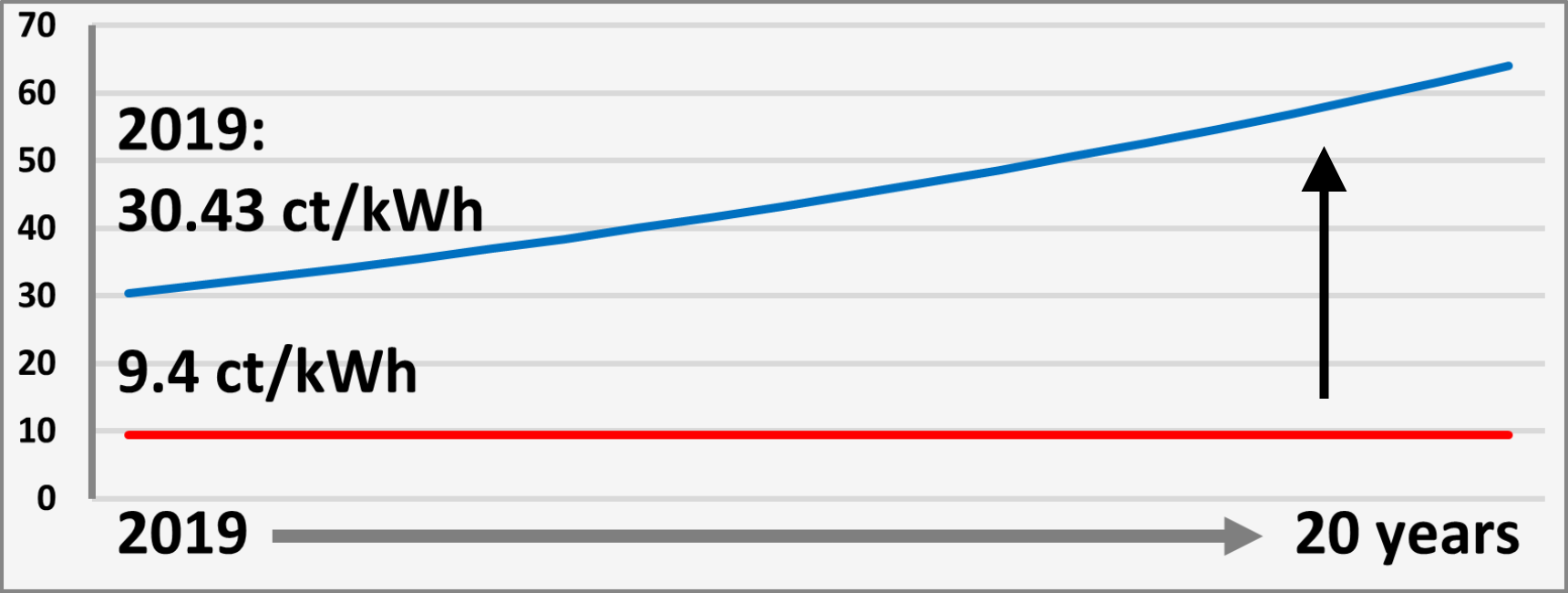You buy a wind turbine and use its produced output to earn back your investment.
What value do you prefer for your electricity?
a) 30 cents/kWh (increasing over time)
b) 9 cents/kWh (not increasing)
It would take much longer to benefit from your investment, if choosing b).
The diagramme shows the situation in Germany:
Power tariffs have reached some 30 ct/kWh (growing 4% per year over the last 20 years), while feed-in tariffs remain both, low and fixed.

This is the logics behind small wind turbines:
Payback time is shortest when replacing electricity that you otherwise buy from the grid.
Avoid oversizing
A small wind turbine's output depends on average wind speeds - and rotor size.
If chosing a larger rotor, then power production will grow - as well as costs (structural weight and foundation size heavily depend on rotor area).
A well-dimensioned turbine will generate the amount of power that you consume.
After amortisation, this amount of electricity will come almost for free and replace expensive supply.
my!WIND in numbers
The following scenario gives an example of a my!WIND 10 kW turbine for residential or small business use; most power is used, some (10%) is sold to the grid at a fixed tariff.

